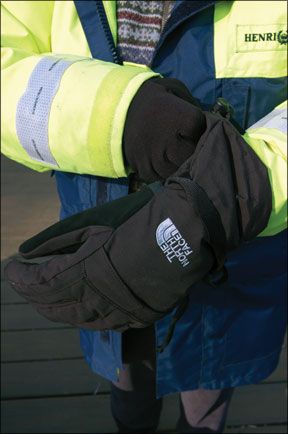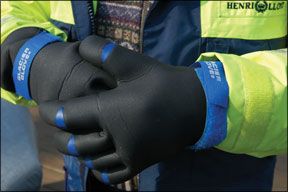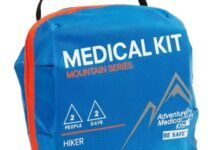Staying warm at sea revolves around the right choice in clothing, and gloves are key part of the mix. Unfortunately, hand warmth and dexterity are often at opposite ends of a glove rating scale, and sailors need a good showing in both realms. Add to this, underway conditions that can range from dry cold to practically being submerged in ice water, and its easy to see why smart shopping can be a tricky proposition.
So we decided to send
Practical SailorTechnical Editor Ralph Naranjo on a series of sea trials with two different glove types. The trip conditions ranged from chilly New England deliveries to an absolutely frigid junket in Antarctica. He returned free of frostbite with a distinct notion that it indeed does take two different technologies to get the job done.

North Face has developed an extreme weather product that puts a smile on the face of anyone headed on deck for an early spring or late fall nightwatch. The five finger M Montana HyVent lined glove ($45,
www.travelcountry.com) incorporates a spray shedding skin, warm insulation, and a tough but very flexible external nylon reinforcement that leaves the hand a nimble appendage while keeping the fingers good and toasty. For additional insulation, its easy to add a pair of North Faces Polartec Power Stretch gloves ($30) as a base layer. Many cold-weather voyagers actually wear the latter in their sleeping bags when temperatures really dive (shown on the right hand in the picture above). These moisture-wicking, thermal liners are thin and flexible and easily slip into the Montana M glove.
Mitten versions of the North Face gloves are also available, and they can actually keep hands even warmer, but we found the loss of dexterity too much to concede. We also discovered that handling wet sheets in extreme conditions eventually soak these gloves, making them a candidate for a freshwater rinse and a drying session in a hot engine room. The company also makes a Gortex version with even better performance quality ($55).
Glacier Gloves ($44,
www.glacierglove.com) live up to their name, and thanks to their neoprene construction, pre-curved finger design, and optional hypalon rubber palms, they make steering and deck work in really bad conditions much more tolerable. Their textured palms afford great gripping action, and the articulated knuckles on each finger eliminate much of the awkwardness associated with typical wetsuit gloves.

Their fleece lining keeps hands toasty, but as with wetsuits themselves, the prospect of spending hours swathed in neoprene is less than appealing, and the best approach is to have both glove options available and only switch from the North Face to the Glacier Gloves when conditions really deteriorate.
Practical Sailor
is currently testing other cold-weather and performance gloves. Stay tuned for an indepth evaluation of these products.





































